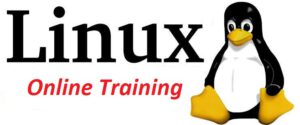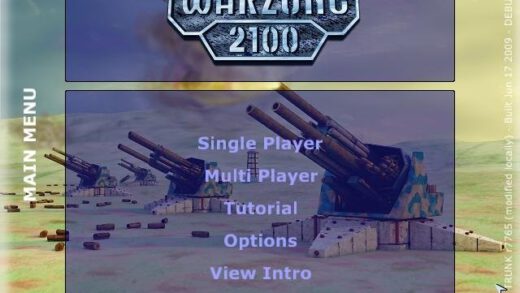 Best Linux Online Courses
Best Linux Online CoursesHello everyone, you can check out list of the best Linux video training courses, before you do that, how are you all doing today? I hope you are all having a great week so far. My week has been pretty good so far, nothing to complain about, yet lol, also note; UbuntuFree.com may be compensated through the links in the post below, but the opinions are our own, please read on…
Today we will feature a list of the top Linux video training classes available via online classes from two very reputable and certified institutions, Linux Foundation and Udemy. Both online institutions are internationally recognized as the leading source for IT & Software educational material. You will find plenty of other courses not listed below ranging from Red Hat training, Ubuntu training, Java, OpenStack, Apache, CentOS and a lot more. Let’s take a look at the best Linux training classes available to download or watch online.
Why Learn Linux?
Linux is the #1 operating system for web servers, cloud computing, smart phones and consumer electronics. Due to its rapid adoption, there’s a shortage of Linux system administrators. According to the 2016 Linux Jobs Report, “the unstoppable Linux job market shows no sign of slowing down.” Here is a list of the top 5 reasons to learn Linux.
- You can bash (script) your computer without making a (physical) mess.
- You’ll be able to enjoy the increased security that comes from using an open source operating system.
- You’ll be taking your first steps down a highly desirable career path.
- You won’t have to resort to bitTorrent to get free software.
- Great way to earn a lot of money with a good secure job.
Top Linux Online Courses
#1. Learn Linux In 5 Days Course
Learn Linux in 5 Days doesn’t make any assumptions about your background or knowledge of Linux. You need no prior knowledge to benefit from this course. You will be guided step by step using a logical and systematic approach. As new concepts, commands, or jargon are encountered they are explained in plain language, making it easy for anyone to understand.
Here is what you will learn by taking Learn Linux in 5 Days:
- How to get access to a Linux server if you don’t already.
- What a Linux distribution is and which one to choose.
- What software is needed to connect to Linux from Mac and Windows computers.
- What SSH is and how to use it.
- The file system layout of Linux systems and where to find programs, configurations, and documentation.
- The basic Linux commands you’ll use most often.
- Creating, renaming, moving, and deleting directories.
- Listing, reading, creating, editing, copying, and deleting files.
- Exactly how permissions work and how to decipher the most cryptic Linux permissions with ease.
- How to use the nano, vi, and emacs editors.
- Two methods to search for files and directories.
- How to compare the contents of files.
- What pipes are, why they are useful, and how to use them.
- How to compress files to save space and make transferring data easy.
- How and why to redirect input and output from applications.
- How to customize your shell prompt.
- How to be efficient at the command line by using aliases, tab completion, and your shell history.
- How to schedule and automate jobs using cron.
- How to switch users and run processes as others.
- How to find and install software.
#2. Ubuntu Linux Server Basics Course
This course is designed for beginners, especially users who have never installed or operated an Ubuntu Linux Server. The course is designed to take students step-by-step through the process of installing and configuring a server from scratch. No experience with Linux or other server environments is necessary. Intermediate users are encouraged to enroll at their own discretion. For example, if they are in need of a basic knowledge of RAID, SSH, Samba, cron jobs, and/or Apache. Advanced users will already know how to use such features and are therefore discouraged from enrolling in this course.
What are you going to learn from this class?
- Create and run your very own Linux server
- Install Ubuntu Server from scratch, like a boss
- Rock the Linux shell with basic server commands
- Harness the power of SSH for remote controlling your server
- Link two hard drives together in RAID 1 with ‘mdadm’
- Share files with Windows systems using Samba
- Automate server tasks like a pro with cron jobs
- Run your own web server with Apache
#3. Learn Basics of Linux Shell
This course is a concise crash-course into Linux Shell. Although it is short, it introduces you to a number of commands to interact with files and directories, and build a chain of commands into pipelines: ls, cp, chmod, grep, find, less, head and even more. Whether you are in an urgent need to get familiar with common shell commands, or want to take your time and discover command line interface, this course will help you to get started.
- Beginner Linux users who are curious about the operating system and its Command Line Interface
- Developers who want to boost their productivity by doing part of their work in the Command Line
- Power users who used CLI in other operating systems (such as Windows) and want to be able to do similar operations in Linux
- Windows users who want to learn the new operating system and need to start with basics of command line
- Enthusiasts and job seekers who want to explore tools used by professional developers and administrators and want to start with the basics
#4. Linux Shell Scripting: A Project-Based Approach to Learning Course
Learn how to shell script through project-based training (Bash Scripting, Bash Programming, Grep, Awk, and more. This course turns that old, frustrating, and outdated way of learning on its head. It’s project-based, which means instead of learning bits and pieces of information, you’ll write actual shell scripts that you can use in real-world situations. You get the chance to immediately put what you learn to use so that you fully understand and remember it.
In this Linux shell scripting course you will learn how to:
- Name your shell scripts.
- Use the proper permissions on your shell scripts.
- Create and use variables in your scripts.
- Use shell built-in commands and operating system commands.
- Make the most out of special variables that are available to you in your scripts.
- Make decisions by using if statements and performing several different kinds of tests
- Check the exit statuses of commands and why you need to.
- Use cryptographic hash functions
- Create random data so you can do things like automatically generate strong passwords for user accounts.
- Linux system administrators, developers, programmers, or anyone who wants to learn Linux shell scripting.
#5. Linux Command Line Basics Course
This is an introductory course to the Linux command Line. It’s great for both Linux beginners and advanced Linux users. You will learn to appreciate the power of the Linux command line., you will then understand the structure of the Linux File System, how to navigate your Linux File System using few simple commands, how to create modify and process files, and even how to create your own Linux commands to make life easier.
Who this course is for:
- anyone who wants to get started with Linux.
- existing Linux users or learners who wants to be effective at using the Linux command Line.
- windows or mac users who wants to migrate to Linux but are afraid to make the move !
- aspiring Linux system administrators.
Remember to like our facebook and our twitter @ubuntufree for a chance to win a free Ubuntu laptop every month!




